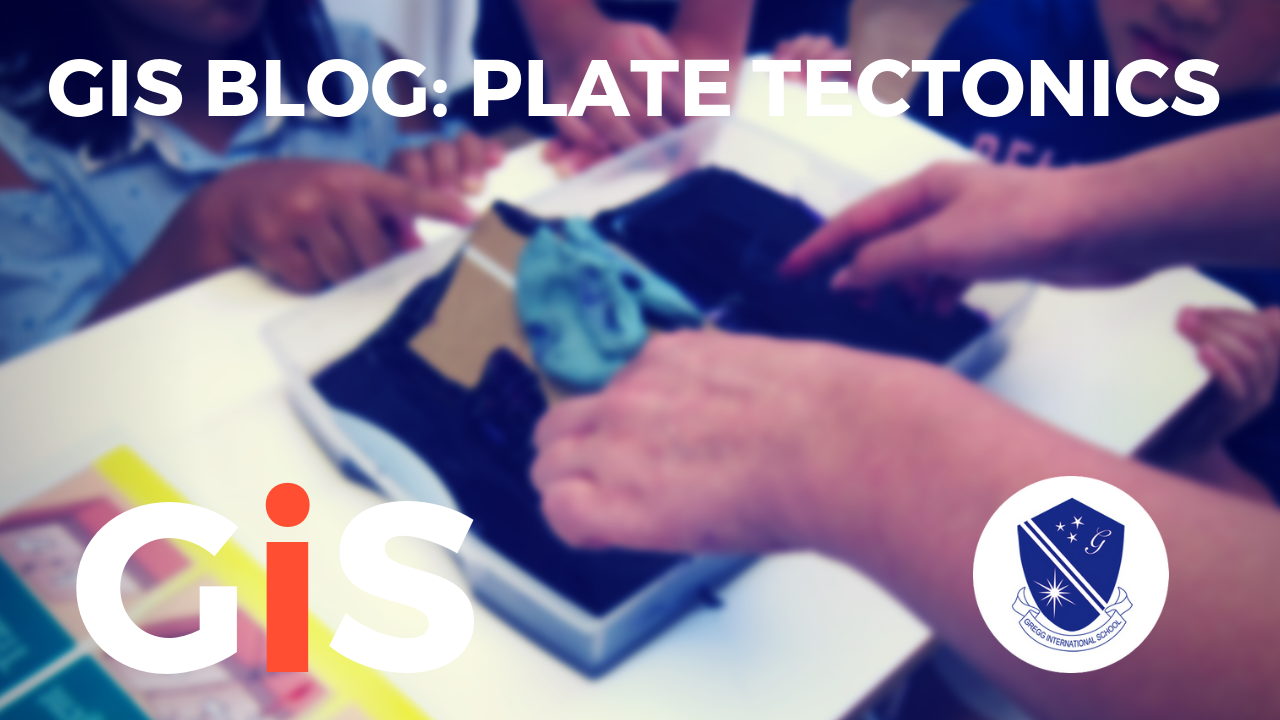In science this month grade 5+6 are studying geology, ie. Earth science. We have studied the Earth’s internal structure and learned about each layer’s composition and function. We are currently learning about plate tectonics and how the movements of Earth’s plates create earth structures such as mountains and volcanoes, and cause eruptions and earthquakes to occur. We looked at transform, convergent, divergent and destructive plate boundaries. Here you can see our recent activity to explore how Earth’s plates move!

In our activity we represented Earth’s tectonic plates with uneven cardboard. The tectonic plates lie on top of a thick liquid substance representing Earth’s liquid mantle.

In this picture we discuss how divergent and demonstrate how plate boundaries move. As the plates move apart the magma in the mantle will rise, when cooled and hardened it will form new Earth crust. Underwater volcanoes also form because of this type of plate boundary.

Here, students directed me in how to show destructive plate boundaries. In destructive plate boundaries, continental and oceanic plates collide and push against each other. The weaker oceanic plate moves under the denser continental plate and melts into magma. This causes volcanic eruptions.

Students discovered that in convergent plate boundaries, two continental plates collide and push against each other. Because both are equally thick and dense, neither will move under the other. The plates eventually buckle and crunch upwards to create mountains, such as the Himalayas.
Learning objectives of the unit:
- Students learned how Earth’s tectonic plates move on Earth’s liquid mantle.
- Students learned about the creation of Earth’s mountains through collision of convergent tectonic plates.
- Through this demonstration, students witnessed how transform plates grind past each other, leading to earthquakes.
- Students saw how sea floor spreading is caused by divergent plates moving apart, and magma cooling to form new Earth crust.
- Students learned that when two convergent plates move together, a thinner oceanic plate will always move under the denser continental plate.


